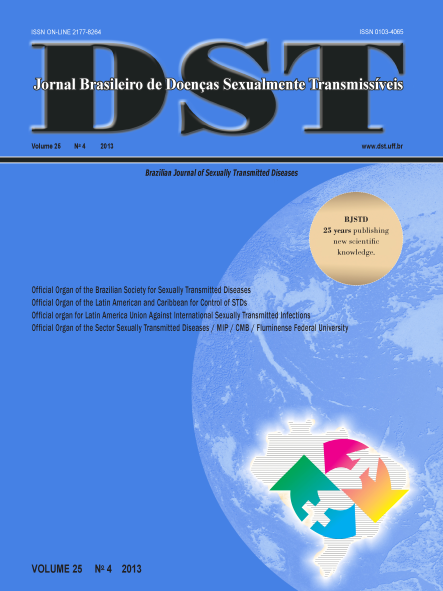Prevalence of syphilis, diagnostic methods and associated factors in patients treated in the laboratory of health Foundation of Vitória da Conquista (BA)
Keywords:
syphilis, diagnosis, prevalenceAbstract
Introduction: In spite been discovered centuries ago, syphilis remains a sexually transmitted infectious disease of major public health impact given the high prevalence found in Brazil and worldwide. The laboratory detection, with subsequent treatment of this disease, can reduce vertical contamination rates among adults and reduce sequelae from its clinical manifestations. Objective: To determine the prevalence of syphilis, as well the gestational and congenital forms of syphilis, and associated factors among patients attending the laboratory of Health Foundation of Vitória da Conquista (FSVC). Methods: A retrospective cross-sectional study, using secondary data obtained from the system of notification for syphilis, from FSVC laboratory from July 2012 to July 2013, following the ordinance criteria nº 3242 of 2011. Results: 134 patients were identified with positive diagnostic tests for syphilis among the 6,699 patients that were tested, revealing a global prevalence of 2%. The prevalence of congenital syphilis was 2.84 and 2.24% for gestational syphilis. It stands out among the positive ones that 19.4% of the patients were aged less or equal to one year old, 37.3% were pregnant women and the vast majority (94%) of them lived in urban areas. 47% of the patients had venereal disease research laboratory (VDRL) titers up to 1:4. Among those patients with primary positive test, 94% got positive results from the confirmatory test. Between newborns that tested positive for syphilis, 60% had titers up to 1:2. Conclusion: The prevalence rates are high considering the parameters established by World Health Organization (WHO) and are capable of representing burden for the population. However, they point out good chances of screening the county from the disease, which is an essential step in addressing this serious infection to the Public Health.












